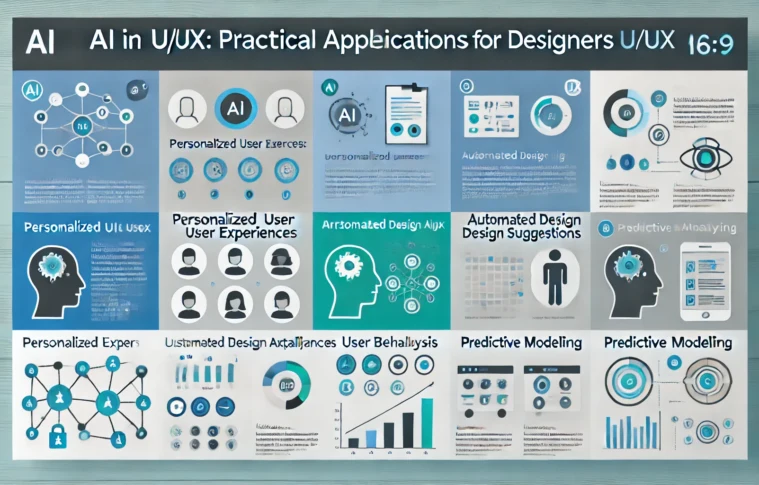Why it Matters: The value AI brings to design processes, helping designers work smarter and create more personalized experiences.
Workshop Insight: Share an anecdote or insight from your recent workshop, emphasizing designers’ growing interest in leveraging AI tools.
Streamlining the Design Process with AI
AI-Powered Design Tools: Explain how AI tools (like Figma’s new AI features or Adobe Sensei) enhance efficiency by automating repetitive tasks, generating assets, and even suggesting design improvements.
Practical Example: Showcase a tool or feature that stood out in your workshop, like an AI-powered color or layout suggestion.
2. Personalizing User Experiences through AI
Data-Driven Insights: Describe how AI analyzes user behavior to generate insights that inform design decisions, making interfaces more intuitive and relevant.
Dynamic Personalization: Discuss how AI allows real-time personalization in apps, such as adapting content or layout based on user interactions.
Case Study: Provide a real-world example of a company (like Spotify or Netflix) that uses AI to enhance UX through personalization.
3. User Testing and Feedback Analysis at Scale
Automated User Testing: Explain how AI can simulate user interactions, helping designers test flows and uncover potential issues earlier in the process.
Feedback Synthesis: Share how AI can analyze large volumes of user feedback and highlight recurring pain points or suggestions.
Example Tool: Mention tools like Maze or Hotjar, which utilize AI to automate parts of the user testing process.
4. Predicting User Needs and Behavior
Predictive Analytics: Describe how AI helps anticipate user needs by analyzing past behavior, improving the user journey and increasing engagement.
Behavioral Insights: Explain how these insights allow designers to optimize key interaction points, like anticipating when users might drop off or need guidance.
Illustrative Scenario: Imagine a mobile banking app using AI to predict when users might need loan offers, helping guide the UI and features.
5. Ethical Considerations: Balancing AI and Human-Centered Design
Ethical AI Design: Discuss the importance of designing with transparency, especially in AI-driven recommendations or personalized content.
Privacy Concerns: Touch on data privacy and how designers should communicate AI-driven features transparently to users.
Actionable Tip: Offer guidance on balancing AI automation with user control to maintain trust and satisfaction.
Conclusion
Recap: Summarize the main points: AI as a powerful design ally, offering efficiency, personalization, and insights, but also requiring ethical consideration.
Looking Forward: Share your thoughts on the future of AI in UI/UX, encouraging designers to explore and experiment with AI while keeping user needs front and center.
Call to Action: Invite readers to explore AI-driven tools in their workflow and join the conversation on evolving best practices for AI in design.
AI in UI/UX Practical Applications for Designers
Himanshu
Disclaimer: The information shared in this post, including data, news, blogs, insights, case studies, etc., is sourced from publicly available materials. While we strive for accuracy, it may not fully reflect the views or verifications of the individuals or organizations mentioned. Readers are advised to verify details independently for complete accuracy.


